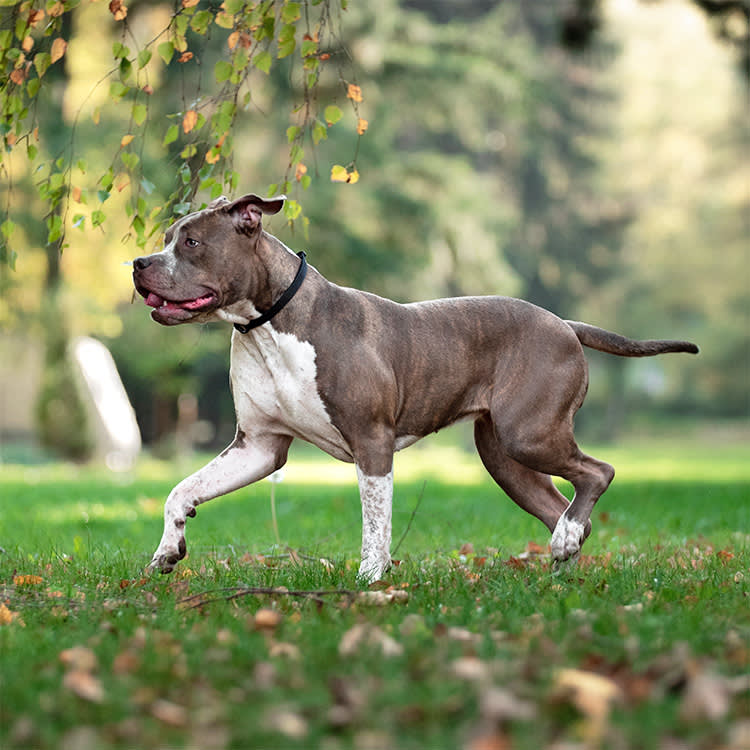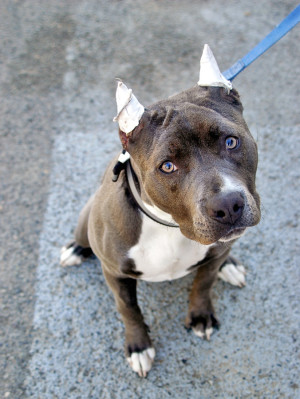XL Bully Dog Exemption: What You Need to Know
Everything you need to know about the ban and legal exemptions
If you’re an XL Bully parent, understanding the strict regulations now in effect across the UK might seem like a bit of a minefield. Following a series of high-profile incidents covered in the press, the UK government classified the XL Bully as a banned dog type under the Dangerous Dogs Act in 2024. The decision brought sweeping changes to how these much-loved – but often misunderstood – pups can be cared for and identified.
The XL Bully ban now impacts dog parents across the UK in England, Wales, Scotland and Northern Ireland, with specific rules and deadlines varying by region. From identifying whether your dog falls under the ban to navigating the exemption process with confidence and care, this guide is here to help you ensure both you and your dog stay safe, secure and compliant so you can continue to live your best life together.
Get (totally free) deals for food, treats, accessories, tech and way more pet parenting must-haves.
Main takeaways
The XL Bully was added to the list of dogs banned under the Dangerous Dogs Act in February 2024, and the government has issued guidance to help identify the breed.
Having an XL Bully without a Certificate of Exemption can result in fines, imprisonment or the heartbreaking possibility of your dog being seized.
Contact your local police force if you suspect your dog is an XL Bully and you do not have an exemption. Specialist support groups, such as DDA Watch or Deed Not Breed, can offer advice and reassurance to help you through the process.
What is an XL Bully dog?
The XL Bully, the largest ‘type’ of the American Bully breed, is known for its muscular body, blocky head and broad chest. Originally bred in the 1990s, the breed is a cross between several other breeds, including the American Pit Bull Terrier, which was banned in the UK in 1991.
Although the XL Bully is not recognised as a specific breed, the UK government published a breed conformation standardopens in new tab to help identify whether a dog should be classed as an XL Bully ‘type’ when the ban was introduced.
Government literature describes the type as a “large dog with a muscular body and blocky head, suggesting great strength and power.” More specifically:
The adult male’s height measures from 20 inches at the withers, and a female from 19 inches.
The head is large and broad.
The neck is muscular and slightly arched.
The body is heavily muscled with a broad chest.
Since 2014, the dog has soared in popularityopens in new tab, but as the breed is not officially recognised by the Royal Kennel Club, there isn’t official data on how many are in the UK. However, in October 2023, a panel of experts told the Environment, Food and Rural Affairs Committeeopens in new tab that there could be up to 150,000 XL Bully dogs in the UK.
What is the XL Bully dog ban?
When did the ban start?
In September 2023, then-Prime Minister Rishi Sunak announced a ban on XL Bully dogs after a series of tragic attacks by what were believed to be XL Bully dogs were publicised in the press.
“The American XL Bully dog is a danger to our communities, particularly our children,” he said at the time. “I share the nation’s horror at the recent videos we’ve all seen. It is clear this is not about a handful of badly trained dogs, it’s a pattern of behaviour and it cannot go on.”
Despite the Dog Control Coalition – which comprises Battersea, Blue Cross, British Veterinary Association, Dogs Trust, The Kennel Club, RSPCA, Scottish SPCA and Hope Rescue – calling for an end to Breed-Specific Legislation (BSL), Sunak vowed to add the breed to the Dangerous Dogs Act and introduce new legislation by the end of the year.
Since 31 December 2023, it has been against the law to sell, give away, abandon or breed from an XL bully in England and Wales, and on 1 February 2024, it became illegal to have an XL Bully in England in Wales unless you have a Certificate of Exemption and the dog is registered on the Index of Exempted Dogsopens in new tab.
Dog parents who already had an XL Bully were required to apply for a Certificate of Exemption from the government, and comply with additional restrictions including keeping them on a lead and muzzled in public, having them neutered and having third-party public liability insurance, in order to keep their dogs.
Other UK regions soon followed suit. In Scotland, similar restrictions were introduced on 23 February 2024, with exemption certificates required by 1 August 2024. Northern Ireland announced safeguards on 5 July 2024, and from 31 December 2024, it became illegal to have an XL Bullyopens in new tab there without an exemption.
How are XL Bully dogs identified?
Rules outlined in the Dangerous Dogs Act state that banned dogs are identified by their physical traits, such as size and build, rather than their breed pedigree. It’s important to note that DNA tests aren’t considered, meaning identification is based solely on visible characteristics.
While you might want to identify your pup by their stunning eyes and floppy happy tongue, it’s up to a trained Dog Legislation Officer to assess whether a dog meets the government’s breed standards. While it can feel daunting, the XL Bully breed standards are still quite specific and should only affect those it’s intended to.
What if my dog looks like an XL Bully, but isn’t one?
If your dog shares significant traits with an XL Bully, it’s understandable to feel worried. The government advises a precautionaryopens in new tab approach, as even dogs with different pedigrees may fall under Breed Specific Legislation (BSL) if they have similar physical characteristics.
If your dog is clearly another breed – hello precious Chow Chow – the ban won’t apply. Although it might understandably feel unsettling, especially if you have a dog with similar characteristics, it’s important to remember that the standard only works if your dog looks like an XL Bully and fits into the description, not the other way around.
For reassurance, you can contact Defra or specialist support groups such as DDA Watch or Deed Not Breed, who are there to help with guidance and advice.
What’s the process for exempting an XL Bully type?
If you believe your dog qualifies as an XL Bully and you do not have a Certificate of Exemption, you must contact your local Dog Legislation Officer through your local police force. Specialist support groups, such as DDA Watch or Deed Not Breed, can also guide you through the exemption process. In England, Wales, Scotland and Northern Ireland, the window for new exemption applicationsopens in new tab has closed, and obtaining one now requires a court order, which may involve additional costs.
For all exemptions, the same rules apply: your dog must be muzzled and on a lead in public, microchipped, neutered, secured at home to prevent escape, and covered by third-party liability insurance before you apply.
It is recommended that your XL Bully is neutered, microchipped and you have third-party public liability insurance already in place before starting the process of going through the courts and reaching out to a Dog Legislation Officer.
It might seem like an insurmountable task but XL Bully dogs can still live a happy and healthy life with these changes (and still give good puppy-dog eyes).
XL Bully dog exemption frequently asked questions
How can my XL Bully be exempt?
To keep an XL Bully legally, you need a Certificate of Exemptionopens in new tab and must follow strict rules for the dog’s lifetime. Your dog must be microchipped, neutered by the deadline in your country, kept muzzled and on a lead in public (including cars), and secured at home to prevent escapes. XL Bully parents must also have third-party public liability insurance and be at least 16 years old to have or walk the dog.
Changes such as moving address, the dog’s death or exporting them must be reported to DEFRA. Failure to follow these rules could result in your dog losing its exemption status and your beloved pet being seized.
What is the exception to the XL Bully ban?
The exception to the XL Bully ban applies to dogs with a Certificate of Exemption. These dogs can be kept legally if pet parents follow strict rules, including keeping them neutered, microchipped, muzzled and on a lead in public.
Pet parents must also secure the dog at home, have third-party public liability insuranceopens in new tab and comply with all legal requirements outlined by the government. Without an exemption, having an XL Bully is illegal.
Can I keep my XL Bully if they are banned?
Yes. If you have received a Certificate of Exemption for your XL Bully, and you adhere to the rules set out by the government, you can keep your XL Bully even though the type is banned under the Dangerous Dogs Act.
If you do not comply with the law and follow the requirements for having an XL Bully, you could face a fine of up to £5,000 and/or six months in prison, depending on where you live, and your best bud could be taken away.







